| Equation | (# children receiving services) x (% families reduce homelessness solely because of this program) x (% of children who avoid foster care solely because of the program) x (Counterfactual rate of child abuse) x ($ benefit from reduced out of home placement) |
| Explanation | This metric estimates the impact of avoided or reduced homelessness leading to reduced out-of-home placements and subsequent improved lifetime health, estimated in terms of quality-adjusted life years (QALY). Number of children in families receiving housing: Reported by program Percent of these adults who avoid homelessness due to the program: [0.52], for programs serving individuals at imminent risk of homelessness (e.g. individuals coming from shelters, or with eviction notices and no feasible housing alternative), we assume a 100% rate of effectiveness. To this number, we subtract the percentage of homeless individuals in the Twin Cities metropolitan area who are on a waiting list for any public housing, Section 8 housing, or some other type of housing that offers financial assistance as a counterfactual [48%] (Wilder Research, 2016). Percentage of children who avoid foster care solely because of the program: [49%], we estimate the average impact of housing on out of home placement from Lenz-Rashid (2013) and Fowler & Schoeny (2015). Benefit from reduced out of home placement: [$350,000], estimate of the value of preventing child abuse (in terms of lost QALYs) is based on the findings of Peterson, et al (2015). Benefits already discounted to present value. |
| References | Fowler, P. J., & Schoeny, M. (2015). The Family Unification Program: A randomized controlled trial of housing stability. Child Welfare, 94(1), 167–187. Lenz-Rashid, S. (2013). Supportive housing for homeless families: Foster care outcomes and best practices. Sierra Health Foundation. Retrieved from https://www.sierrahealth.org/assets/pubs/Cottage_Housing_Report_May_2013_Web.pdf. Minnesota Department of Human Services (2018). Child protection in Minnesota: Keeping children safe. https://edocs.dhs.state.mn.us/lfserver/Public/DHS-4735-ENG Peterson, C., Florence, C., & Klevens, J. (2018). The economic burden of child maltreatment in the United States, 2015. Child Abuse and Neglect, 86, 178–183. https://doi.org/10.1016/j.chiabu.2018.09.018 Wilder Research. (2016). 2015 homeless adults and children: Minnesota statewide survey data. Retrieved from http://mnhomeless.org/minnesota-homeless-study/detailed-data-interviews/2015/HennepinCountyMN_Adult2015_Tables51-67.pdf Wilder Research. (2017). Homelessness in Minnesota: Youth on their own. Findings from the 2015 Minnesota Homeless Study. Retrieved from: http://mnhomeless.org/minnesota-homeless-study/reports-and-fact-sheets/2015/2015-homeless-youth-4-17.pdf |


